All told, 2017 was a big year for fans of ‘90s shoegaze. That year, two of the genre’s most notable bands released long-awaited albums after recent reunions: Ride and Slowdive. Lesser-known but notable bands like Swervedriver and The Telescopes also released music after long hiatuses. A few years prior, My Bloody Valentine and Lush also reunited and toured for the first time in decades. In the midst of this revival, however, the true standout was Slowdive.
Shoegaze is a genre of rock music named for musicians who maintained distance from audiences, preferring to stay focused on their effects pedals. It’s often associated with introverts and dreamy sounds characterized by reverb and distortion.
In 1991, Slowdive released their first album, “Just For A Day,” on Creation, the now-defunct label legendary for its role in British alternative rock. But Creation dropped the band in favor of Britpop giants Oasis and Primal Scream. Thus, Slowdive disbanded in 1996. Lead singers Neil Halstead and Rachel Goswell quietly collaborated under the project Mojave 3 through the ‘00s, but notwithstanding the Mazzy Star-inspired “Love Songs on the Radio,” their acoustic songs feel mild in comparison to Slowdive’s atmospheric soundscapes.
In their early years, Slowdive lacked commercial success and were met with critical backlash. As Britpop surged in popularity, dreamy shoegazers were deemed uncool by the press. A writer for the prominent British music magazine Melody Maker said that he would “rather drown choking in a bath full of porridge” than listen to Slowdive. But today, the band has 3.5 million monthly Spotify listeners. And, their 2023 album, “Everything Is Alive” placed in the Billboard Top 10 upon release, a first for the band. They now receive near-universal acclaim.
On May 13, I attended their sold-out show at the Paramount Theatre in Seattle (capacity 2800). In the lobby, there was a palpable sense of energy. For a band that originally broke up almost 30 years ago, it felt like a majority of the audience was born after 2000. The rest were mostly GenXers–I went with my dad.
In recent years, Slowdive has experienced a resurgence among Gen Z, especially on TikTok. In an interview with the U.K. magazine The Standard, Halstead welcomed the new listeners:
There’s something quite teenage-y about [“Pygmalion” and “Souvlaki”], largely because we were teenagers when we made them. The [young listeners] have some empathy with it, and it’s all quite angsty [sic.]. You see it at the gigs when they sing along to them.
Thanks to my job at the theatre, I sat in the “loge” section, the second row of the lowest balcony. Fans who wanted a closer view of the stage waited for hours outside the venue. The theatre has a convertible floor system, the first of its kind. For most shows, the entire venue is fully seated. But for some performances, the seats collapse, revealing a flat floor underneath.
The merchandise did not disappoint. Much of it was tour-exclusive, and I bought a black “Slowdive” shirt that I love. A poster was also tempting, but I had already done enough damage (the t-shirt was $44).
The show opened with Creepoid, a grungy shoegaze-inspired band from Philadelphia. Founded in 2010, Creepoid broke up in 2018 and reformed this year. Although shoegaze did reach the U.S. in the ‘90s, its influence now inspires musicians everywhere. Shoegaze has since spawned scenes in Japan, the U.S., as with Creepoid.
Although I was not familiar with Creepoid prior to the show, I enjoyed the set. While many of their songs sounded very similar, their passionate guitar solos and alt-rock edge stood out. As an opener, they were great.
Slowdive opened their set with the distortion-drenched “Avalyn,” from a self-titled EP released a year before their first album, “Just For a Day.” In a style reminiscent of the Cocteau Twins, “Avalyn” creates a powerfully loud, dreamlike atmosphere with near-indecipherable lyrics. Rachel Goswell’s breathy vocals meld with the rest of the band, almost as another instrument.
For fans of Slowdive’s pre-reunion ‘90s work, nine of their 16 songs came from that era. “Alison,” a track led by Neal Halstead’s vocals, transports listeners to a hazy ‘90s house party and vignettes into a messy, young relationship. They followed with “When the Sun Hits,” another crowd favorite from “Souvlaki.” At the song’s height, it transitions bombastically from quiet to loud; a drop so dramatic it might even make the most awkward Seattle shoegaze fan dance.
Although I favor Slowdive’s ‘90s output, the newer songs were lovely, if less distinctive than their ‘90s classics. Songs like “Shanty” from 2023’s “Everything Is Alive” saw the band swap their guitars and effects pedals for synthesizers and a strobing backdrop. One clear highlight was their 2017 song “No Longer Making Time.” While the “drop” exists on the recorded version, live, it was nothing short of euphoric.
Slowdive will complete the rest of their tour in Western Europe this summer. If you’re hoping to catch them again in Seattle, remain hopeful because the band is touring more now than ever.
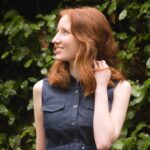
Holly Brusse is a first-year student at Seattle Central College. Her interest in journalism started when she joined her high school newspaper during her sophomore year of high school. She enjoys writing on politics, music, and pop culture. Outside of school she enjoys listening to music, painting in watercolor, and spending time with her cat.


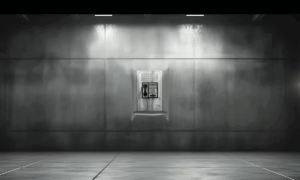
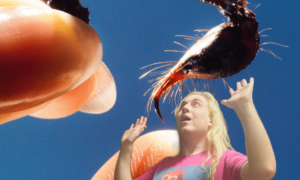
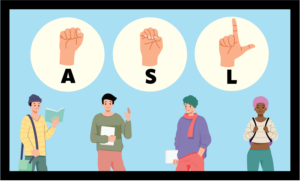
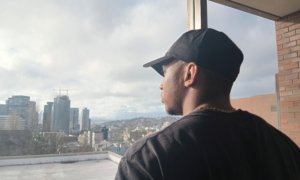
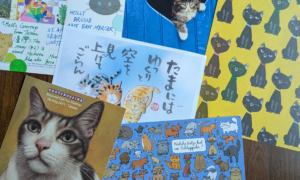
Be First to Comment